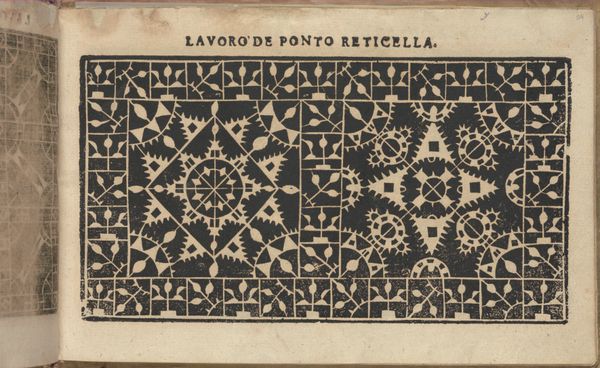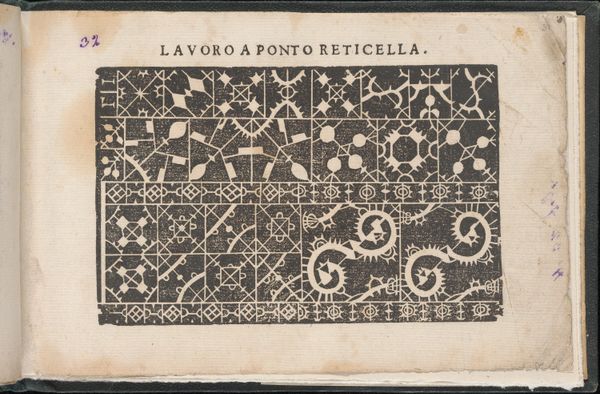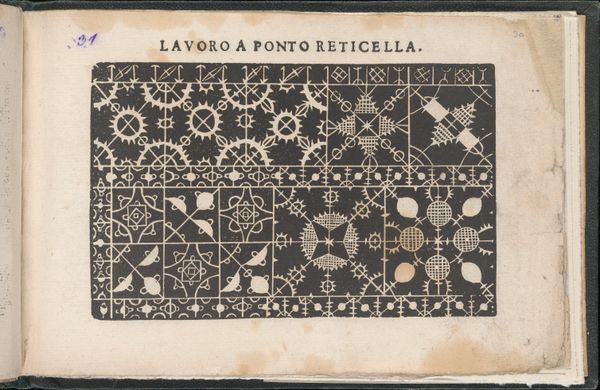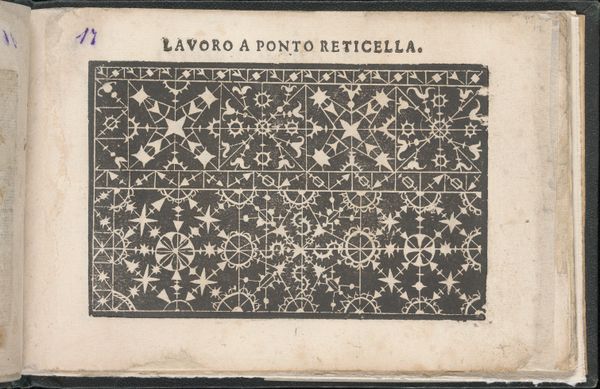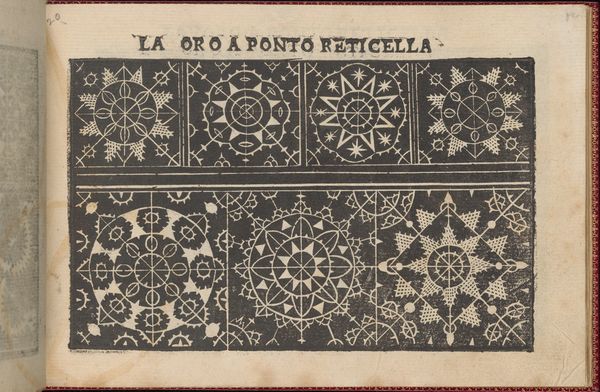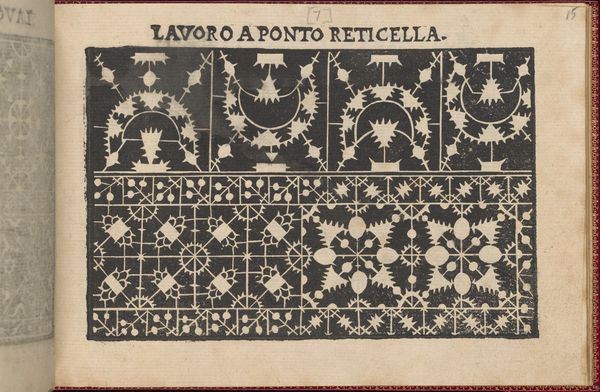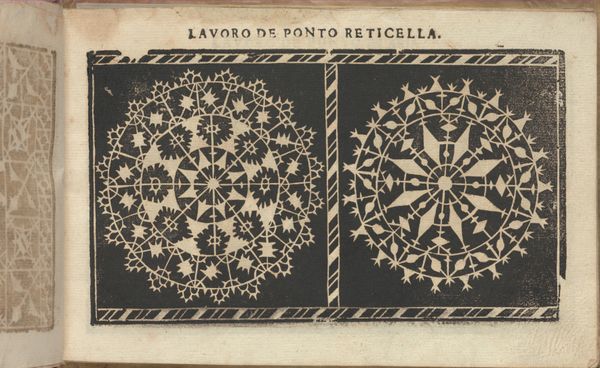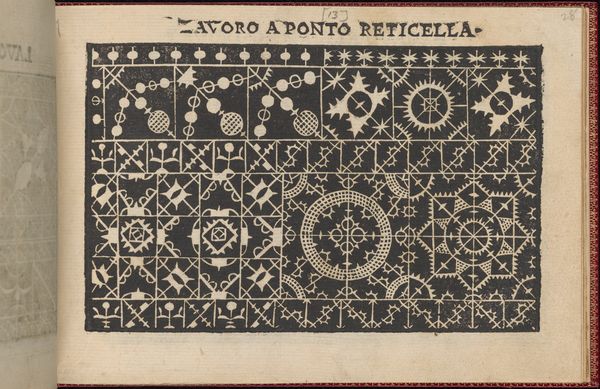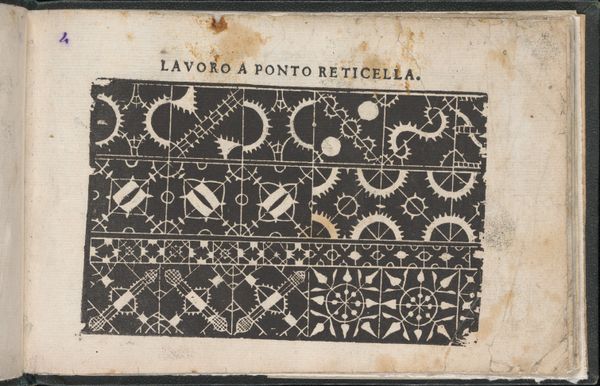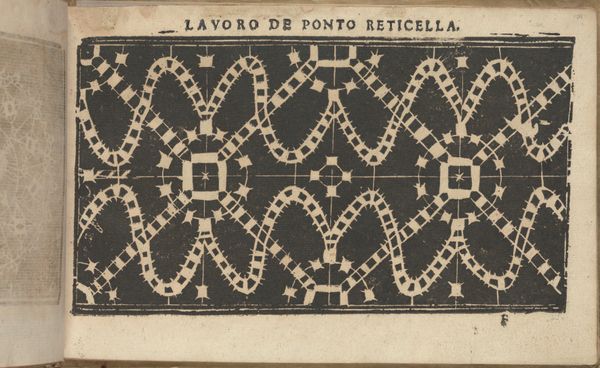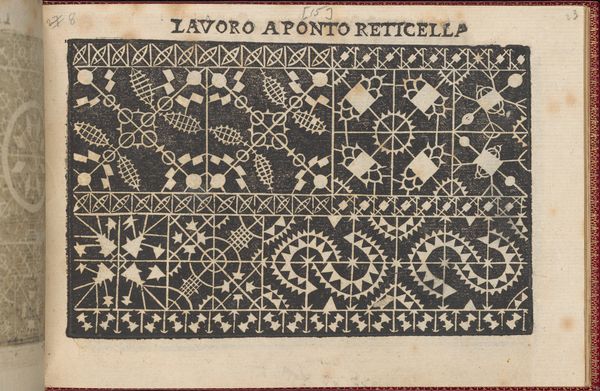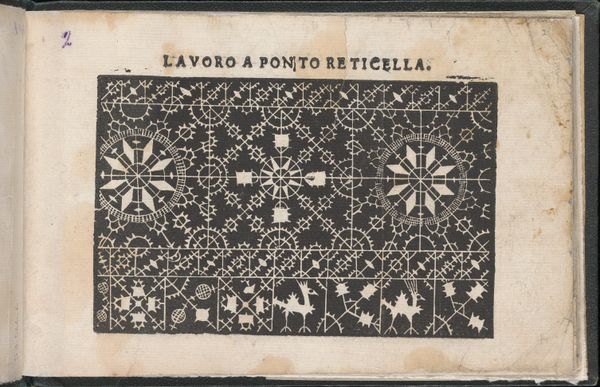
Studio delle virtuose Dame, page 30 (recto) 1597
0:00
0:00
drawing, print, intaglio, woodcut
#
drawing
# print
#
intaglio
#
11_renaissance
#
geometric
#
woodcut
#
line
Dimensions: Overall: 5 1/2 x 8 1/16 in. (14 x 20.5 cm)
Copyright: Public Domain
This is page 30 from ‘Studio delle virtuose Dame’, a book of lace patterns made in Italy by Isabella Catanea Parasole, sometime around 1600. These geometric forms, rendered in woodcut, were intended as guides for the intricate needlework known as ‘Ponto Reticella’ – a style of lace-making that was highly fashionable among the aristocratic elite. Now, what does it mean to think of this image as a work of art? Well, in its time, the ‘Studio’ was designed as a practical manual, aimed at women. But the book also speaks to broader social and cultural conditions. Lace-making was a valued skill, offering women a creative outlet and a potential source of income. Manuals such as this played a crucial role in the transmission of knowledge, empowering women within the domestic sphere. To understand the ‘Studio’ more fully, we might consult archival records of the lace trade, or even examine surviving examples of ‘Ponto Reticella’ to see how these patterns were brought to life. For the art historian, the meaning of art is always contingent on its social and institutional context.
Comments
No comments
Be the first to comment and join the conversation on the ultimate creative platform.

